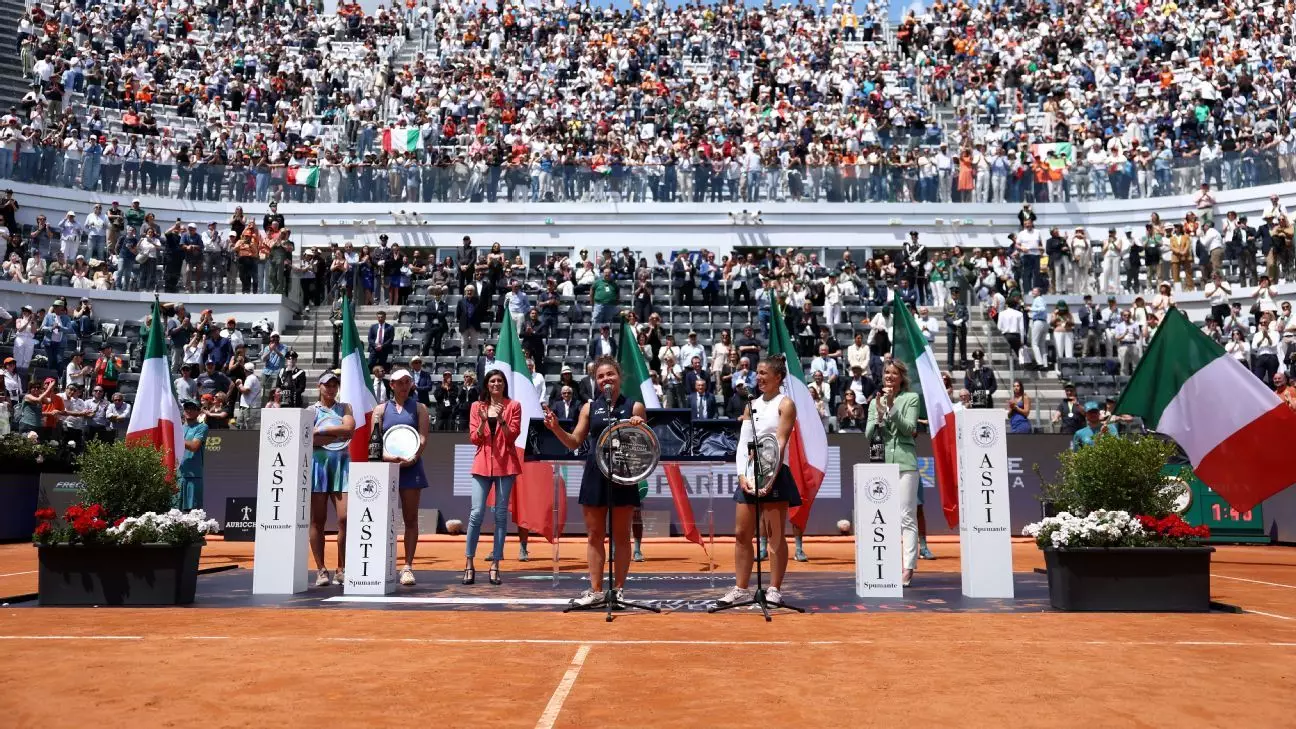Italy’s prominence in the world of tennis is surging, buoyed by the spectacular performances of its top players. At the forefront is Jannik Sinner, the current world No. 1, who has not only captured the attention of tennis fans globally but has also redefined expectations for Italian men’s tennis. Meanwhile, Jasmine Paolini’s recent triumph at the Italian Open marks a historic feat: she is the first Italian woman to clinch the title in four decades, catapulting her into the upper echelons of women’s tennis. This duo is joined by a promising roster including rising stars Lorenzo Musetti, Federico Cincà, and Tyra Caterina Grant, all of whom signal a new era for Italian tennis.
President of the Italian Tennis and Padel Federation, Angelo Binaghi, has a vision that transcends mere participation; he aims for dominance. He seeks to elevate the Italian Open to the status of a fifth Grand Slam tournament, an ambitious goal that could rewrite the narrative of tennis as we know it. His argument against the existing quartet of Grand Slams is compelling. In a sport that champions competition and evolution, maintaining a monopoly for over a century seems anachronistic.
A New Grand Slam? The Controversy Unveiled
Binaghi’s bold proposal to promote the Italian Open as a Grand Slam introduces complexities and controversies that warrant serious discussion. In a world where competition drives innovation, the arguments for expanding the Grand Slam lineup are especially pertinent. “Why are there always four, and always the same four?” Binaghi provocatively questioned. Scrutinizing the long-held structures in sports governance could invigorate tennis, bringing fresh prospects and experiences to both players and spectators.
While the Italian Open is currently categorized as a Masters Series event—just a tier below the prestigious Grand Slams—the tournament is increasingly resembling the Slams in its scale and intensity. The two-week duration aligns it closely with the four major tournaments, and the successes of Italian players have sparked an unprecedented surge in interest. Italy’s hosting of elite events like the ATP Finals and the impending Davis Cup Final reflects the country’s growing capabilities as a center for tennis excellence.
Infrastructure Investments: Building the Future
Central to Binaghi’s ambitions is the plan to enhance the Italian Open’s main stadium, Campo Centrale, with a retractable roof, an upgrade that is not only practical but transformative. The budgeted 60 million euros investment is set to be realized by 2028, an era predicted to yield significant returns, both socially and economically. By increasing capacity from 10,500 to 12,500 seats, the Italian Open aims to not only accommodate more fans but to provide a captivating atmosphere that aligns with the best traditions of Grand Slam tournaments.
Moreover, the expansion of the Foro Italico grounds, increasing from 12 to 20 hectares, signifies a forward-looking approach that could redefine the visitor experience. The addition of a new 3,000-seat arena within the Stadio dei Marmi showcases Italy’s intent to provide ample opportunities for both spectators and players alike. With additional courts and spaces for landmark events, the infrastructure perfectly complements the ambition for greatness.
Global Strategy: Tying Opportunities to Growth
Binaghi’s keen organizational acumen also shines through in his broader strategy of seizing international opportunities. The intention to acquire the Madrid Open license, coupled with eliminating the event to bolster the Italian Open, reveals strategic foresight and a willingness to disrupt the status quo. By recognizing the interconnectedness of smaller ATP tournaments to those of greater significance, Binaghi is pushing for a vision that positions Italy as a central player in the tennis world.
This holistic perspective not only benefits Italy but promises a revitalization of tennis globally. A new era marked by growth and inclusivity can accompany Italy’s rise as a formidable power in the sport. It’s a vision underscored by the privilege of being “world champion both on the court and at the organizational level,” as Binaghi proudly articulated. Indeed, it is this unyielding ambition that could propel Italy from regional success to international prominence, potentially reshaping the sport for the better.

